We’ve become so comfortable with plastic packaging, it’s hard to think about any meaningful change. What do we use instead?
This is where I learned about the future-facing work of Julia Marsh—a graduate student of Brian’s at The School of Visual Arts Graduate Design Program—and how her MFA Design thesis turned into a company called Sway.
According to Our World in Data, packaging material makes up the bulk of plastic waste on our planet, with few sustainable solutions.
Born in the coastal town of Carmel, California, Julia always felt a connection to nature and her surroundings, especially the ocean. For her master’s thesis, she began experimenting with seaweed as a potential solution for replacing single-use plastics. Two years later, she has a staff of 10 and is generating momentum for her idea.
Curious to see how her travels and projects were coming along, especially during a pandemic, I caught up with Julia. In this interview, you’ll learn how she discovered seaweed as a viable option for replacing plastic, her shift from designer/art director to CEO of a company, what success looks like, and why everyone—from scientists, journalists, decision-makers at companies, designers, and all of us consumers—play a pivotal role in protecting the future of our planet.
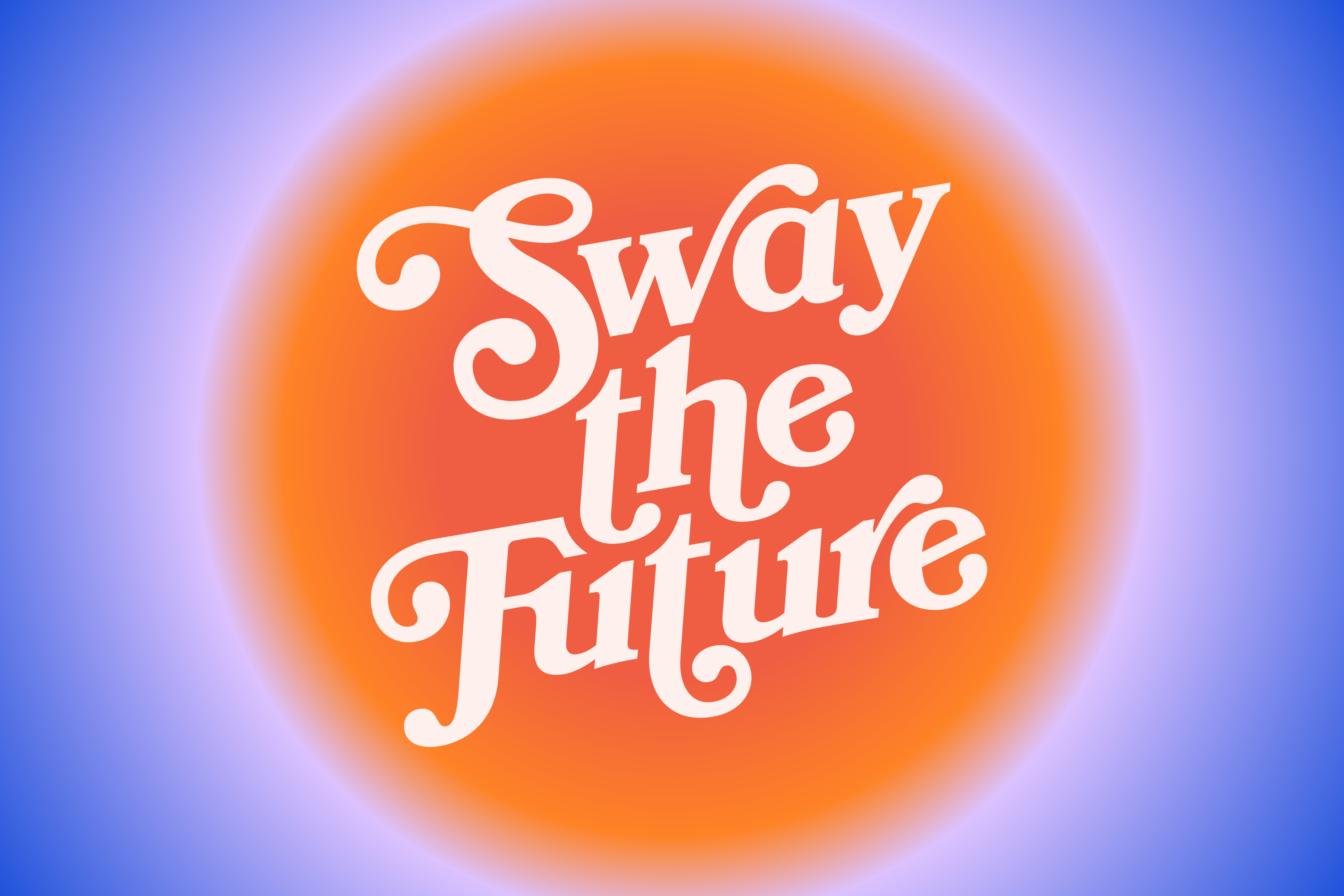
Let’s start with the big picture: The world is changed. Climate crisis is ongoing. As a designer, what does this all mean for you?
We’re in the midst of three major crises: climate change, racial inequality, and a pandemic. All of these crises can be addressed through design. At the root of all of them is justice. Climate justice is racial justice, health justice is climate justice, they’re all the same thing. The systems of power and privilege that destroy the environment also strip vulnerable communities of their humanity—and too often, their lives. As a designer, I see this relationship as an opportunity to seed solutions inspired by this intersectionality.
I come from a design and a creative direction background. I can wear a number of different hats and rely on advisors. But really, the plastic problem is too complex for one person to fully address. My team comes from all different backgrounds to tackle the problem from all sides. We’re not just making a new material, we’re designing out a material ecosystem.
One aspect of that approach, largely led by design, is that we’re trying to develop a community around our idea. It’s pretty unconventional for most biomaterial companies to do that, but we believe that including more people in the conversation will aid them in becoming more responsible stewards of the planet and will bring more progressive attitudes about the climate into the mainstream.
Fun fact: The community thing has broadened our talent pool, too. We’ve actually found several of our employees via Instagram. They’re all people who care a lot about the climate and are fascinated by seaweed as a replacement for plastic.
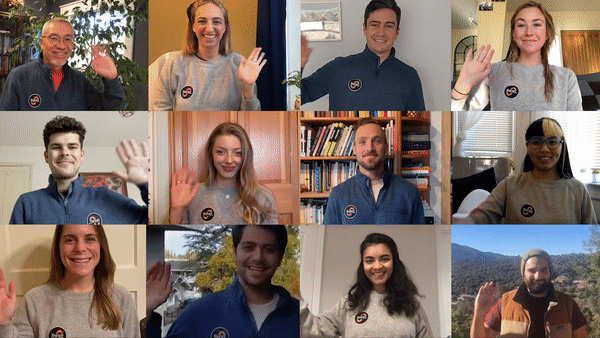
What was the moment of inspiration for starting Sway and what initial steps did you take to turn this spark into something tangible? What was the first sign that this was becoming real?
The core inspiration for Sway was my career as a designer operating at odds with my relationship with the environment. I was constantly designing packaging systems for brands which relied solely on plastics. But I know the harm plastic does—I was raised next to the ocean. And, growing up, my father always told me, ”Never turn your back on the ocean.” He meant it literally, of course, to avoid being swept out to sea—but I like the metaphor!
The first sign that this was becoming real was when I found myself in my tiny Brooklyn apartment with a steaming pot of melted agar. My roommates came in to see me pouring this stuff into molds, and that evening we all drank out of cups made from seaweed. That was a moment where I realized you don’t have to have a STEM background or training in biomaterial engineering to be creative with new materials.
Another big moment was the summer of 2018, halfway through my MFA degree. I was in Indonesia with my co-founder and partner, Matt, on a scooter, and we were circling the entire coast of Nusa Lembongan, desperately trying to find seaweed farms. We rounded a corner and saw a long stretch of shallow water marked with lines used to grow seaweed—and about ¼ mile out, we saw a farmer tending to his crop. Wading out in the warm water to meet him made Sway feel VERY real.
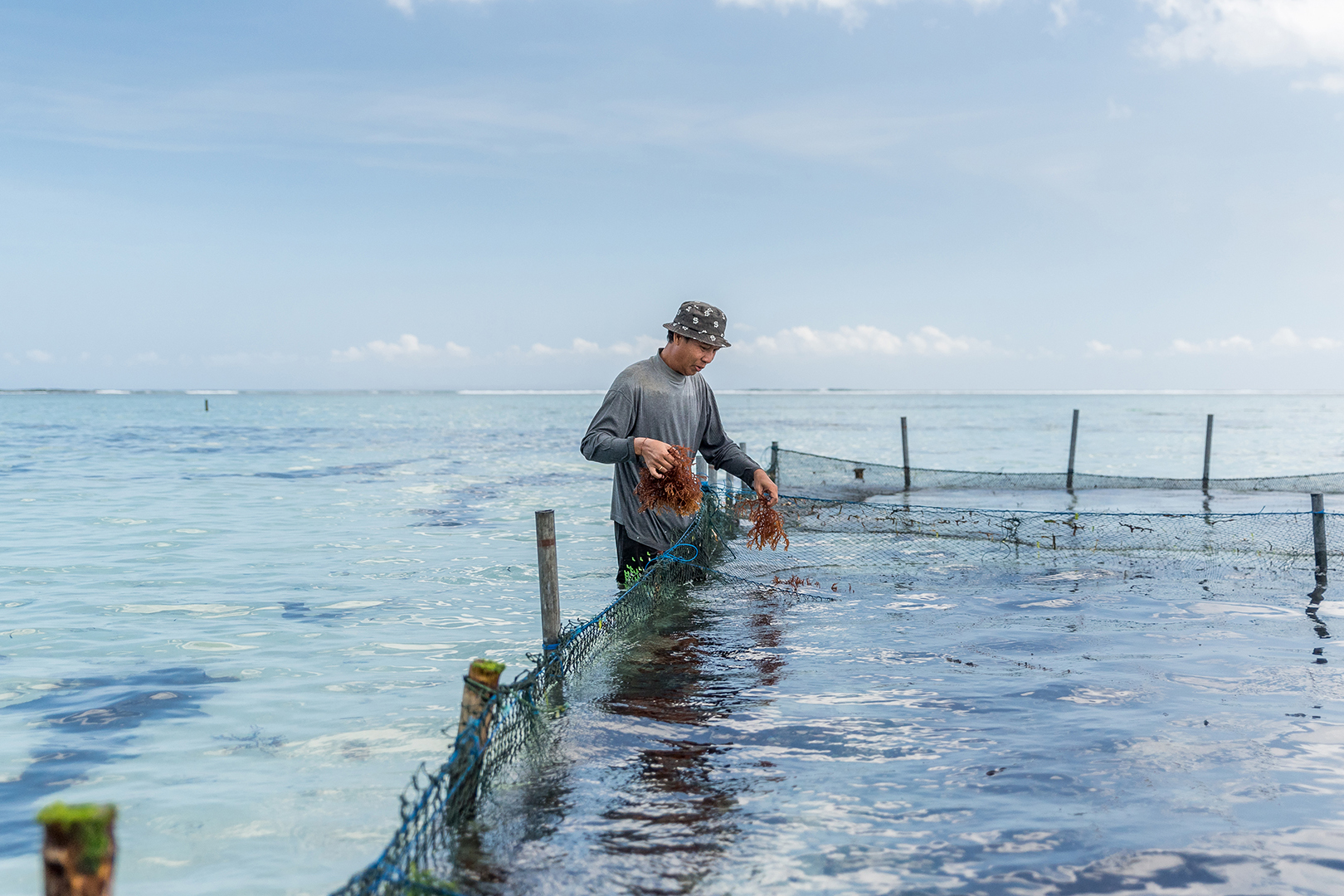
Another was gaining the faith of my mentors, Brian Collins and Leland Maschmeyer. Given their backgrounds and their relationships with consumer packaged goods companies, it was a total vote of confidence when they essentially told me, “This is a good idea and you should keep building it.”
They invited me to speak at the Aspen Ideas Festival in 2019, and that was the real turning point. Onstage with Collins, I shared what I thought was a graduate thesis that had legs, but then there was this a-ha moment: Suddenly I have a much larger audience that’s not just my New York graduate school cohort. The real world likes the idea, too, and they want to see it happen. I realized I was going to commit my life to this.
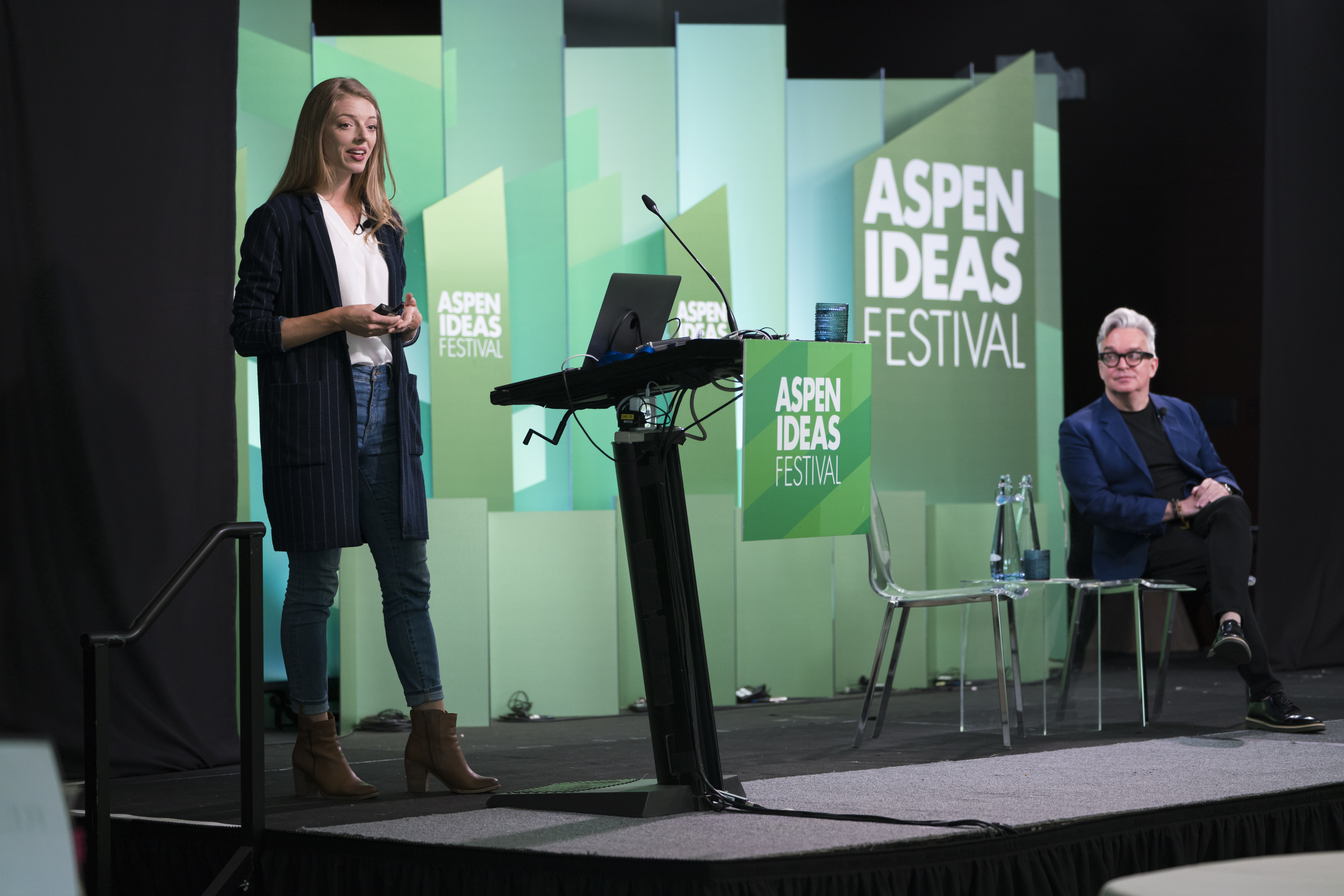
After Aspen, my partner Matt and I planned a road trip from California to the very southernmost tip of Argentina. We were going to visit every seaweed farm possible along the Pacific coast and the Caribbean, and along the way we’d meet with biomaterial innovators and folks restoring ecosystems and preserving nature. We had an incredible learning experience traveling through 11 countries—we drove all the way to Peru. And then COVID hit.
We were in this little desert oasis town called Huacachina in the Central Coast of Peru. It’s one of the driest places in the world. We woke up in the morning, and there was a medieval-style post on the wall that basically said, “Peru is going into lockdown by midnight tonight, your constitutional rights are being suspended, go wherever you want to be for the foreseeable future because after today no one’s moving.” Weeks later, we ultimately realized we had to end the trip and go back to the States, which we really didn’t want to do.
The only way to leave the country was a political evacuation flight sanctioned by the U.S. Embassy. So we waited in line at the embassy for three days, from 4 a.m. until whenever the line ended, and we didn’t get on a plane. We couldn’t be evacuated. On the fourth day, we were the last ones in line, the plane was full, and just as we were about to leave an embassy worker approached us and whispered, “There’s a plane being run by the Church of Latter-Day Saints, they have a couple extra seats, and they’re going to Los Angeles.”
We flew home out of a military base along with 200 Mormon missionaries, and arrived in a very different United States from the one we’d left. It was nuts. Needless to say, we were a little disoriented coming back and having to refocus on business and career.
I think that whole experience really illuminated how important adaptability and optimism and persistence are. We hit the ground running. We said, “All right, well, if we have to be back in the States, then we’re committing fully to Sway.” We immediately hired a supply chain lead and a mechanical engineering lead, and then a sustainability strategist and another supply chain gal. We have a brand and mission manager, a materials scientist, a junior industrial designer, fellows—it’s really grown! The team is 12 people now, all working remotely. We’ve been able to make a lot of progress in spite of COVID.
“We’re in the midst of three major crises: climate change, racial inequality, and a pandemic. All of these crises can be addressed through design.”
Why seaweed?
During our time in Indonesia, I learned that seaweed is an incredibly sustainable crop; it doesn’t require fresh water, land, fertilizer, or much labor, and it grows at a rate 20-30 times faster than most other land-based agriculture!
Cultivating seaweed is also an environmental service. It actually increases biodiversity, purifies air and water, and reduces carbon emissions.
We source seaweed from farms that benefit the communities that live there. Seaweed benefits ecosystems as it encourages biodiversity and is a home for all sorts of life. It consumes 20 times as much carbon as land forests. It mitigates ocean acidity. It’s doing good for the people, it’s doing good for the environment. And when we harvest it, we can process it in a way that recycles water.
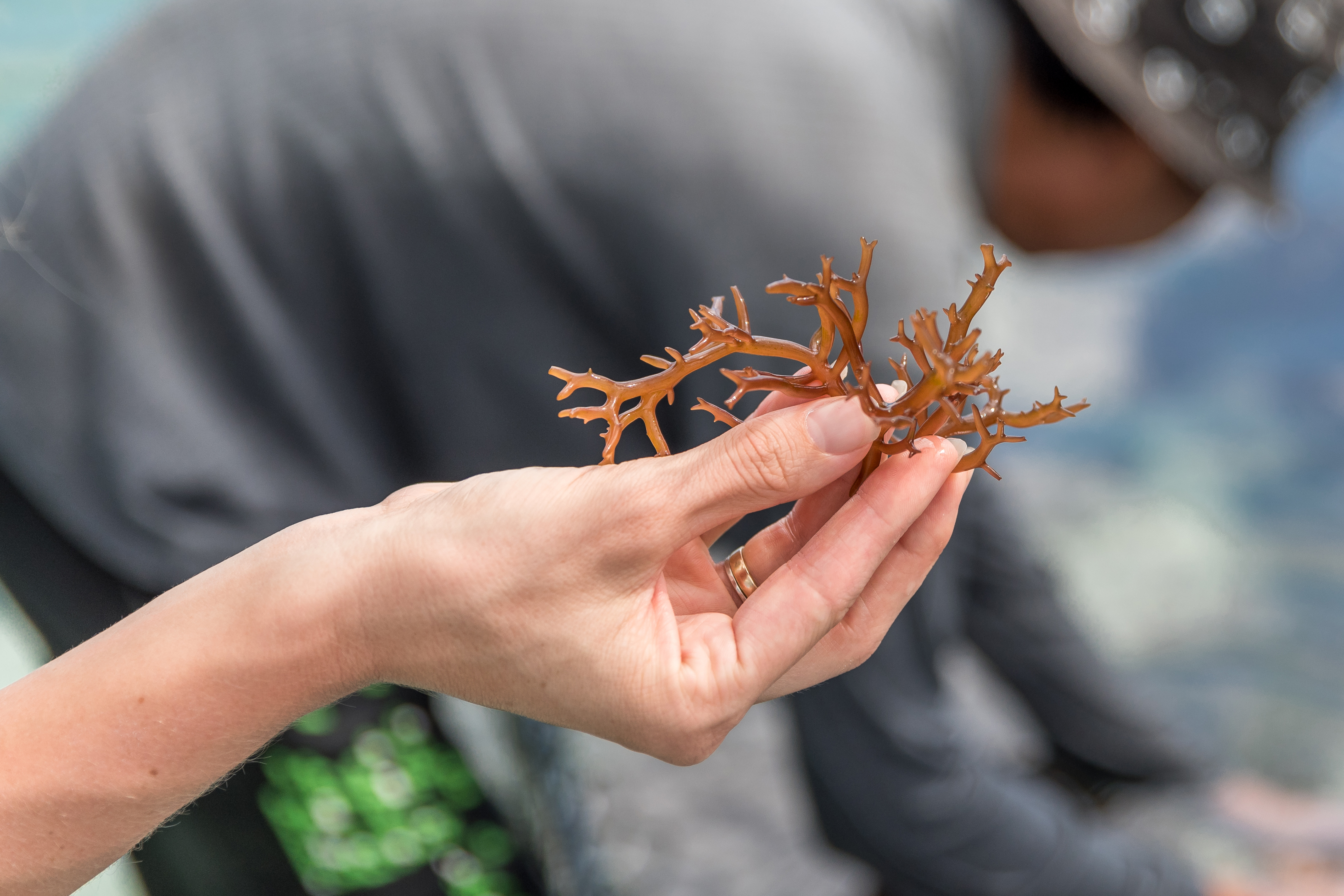
Our prototypes are 80% seaweed, so it’s really important that we work with farms that are practicing sustainable aquaculture and that treat their workers well. And it’s even better if we can find parts of the world that have been really negatively impacted by climate change—places where overfishing is an issue, where jobs are being lost—and work with seaweed farmers in those regions, because then we’re uplifting communities that need it the most.
We’re addressing the problem of plastic with our seaweed packaging material, but we’re not naive. We know there’s no silver bullet. That’s why we decided to drive to Argentina, to get a better understanding of how the world works outside of our little bubble. On our overland trip, we were really keen on finding people who are using the natural materials around them, or using waste materials that have been brought into their communities by the United States.
We found ourselves ending up in really small, remote villages and just talking to people, asking, “How are you dealing with the plastic problem?” Or, “How are you utilizing waste material?” We met so many inspiring people this way, but what was most exciting was encountering other regenerative solutions.
Can you outline some important keywords that act as a starting point for people who are just learning about this industry? For example, regenerative vs. sustainability. What does it all mean?
Regeneration represents the natural evolution beyond sustainability. It calls for new products, supply chains, and business models that actively rejuvenate the planet rather than destroying it. At Sway, we’re engineering packaging that regenerates the earth, adapting the world of commerce to work in harmony with nature. Our packaging solution is meant to serve as a case study in regenerative design; it’s a material that gives more than it takes.
I’ll give you a specific example: When you process seaweed, you have the usable seaweed material, and you have leftover seaweed material. What do you do with the leftover stuff? That’s a design opportunity. How can we make people excited about the leftover stuff, the waste material? You can turn it into paper, you can use it as fertilizer, you can turn it into feed for cows—there are so many possibilities.
Design thinking asks that we look at the full system, and that’s what I’m most excited about right now. How can we create value with that waste product? How can we make a complete regenerative story so that we’re not just making a packaging material, but we’re using all of the material that we have?
“Regeneration represents the natural evolution beyond sustainability. It calls for new products, supply chains, and business models that actively rejuvenate the planet rather than destroying it.”
I want to stress that these ideas have been around for a long time. Regenerative design represents a systemic shift in priorities—it’s not a ground-breaking or novel concept! What’s exciting that’s happening right now is that finally the narrative is finally shifting. More people are talking about regeneration in the mainstream. Companies know that they can save energy and tax costs by investing in carbon negative technology.
In many of the regions that Matt and I visited traveling through Central and South America, there isn’t formal waste infrastructure, so people just burn their plastic. It’s very common. Plastic ends up polluting the air we breathe and the water we swim in. Often, these toxic materials are ending up inside of our bodies. There’s evidence that it’s causing cancer and serious illness, so there are really significant human implications. You can eliminate all of that by swapping out the material. It’s not like some out of reach idea. It’s practical and important for human health, for equity, for economic reasons, and for the environment.
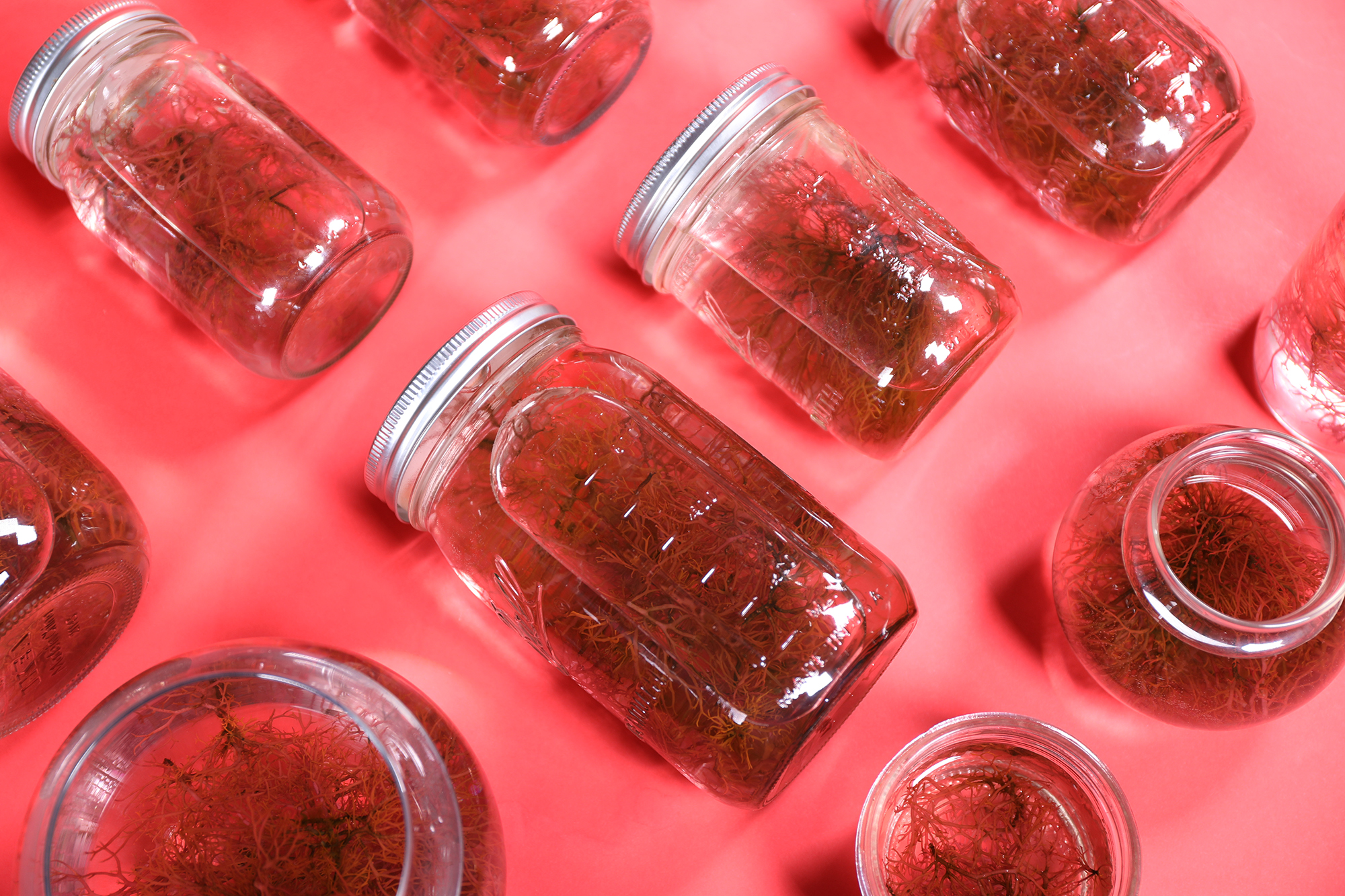
How do you define success for Sway? What does it look like?
I truly believe that material innovation not only bypasses policy, but it also enables carbon negative behavior and regenerative behavior. Individuals should be responsible for their behavior, but the bulk of the responsibility lies with corporations and brands and manufacturers who are choosing materials that are actively killing the planet. If you swap out that material, you’re doing a huge favor to people and the planet.
Short-term success for Sway will start with the launch of our material. We’re focused on seaweed-based replacements for really common plastic materials, like the packaging used by digital native brands. Unboxing experiences tend to be really high waste moments, but increasingly, shoppers don’t want a ton of plastic in their orders. We see that as a really exciting design and campaign opportunity for brands interested in using a regenerative packaging material.
In the long-term, I hope Sway will become a regenerative design studio that works alongside brands and manufacturers to move beyond sustainability. My team wants to see a major shift towards integrating practices that actively replenish ecosystems. That’s the long-term goal.
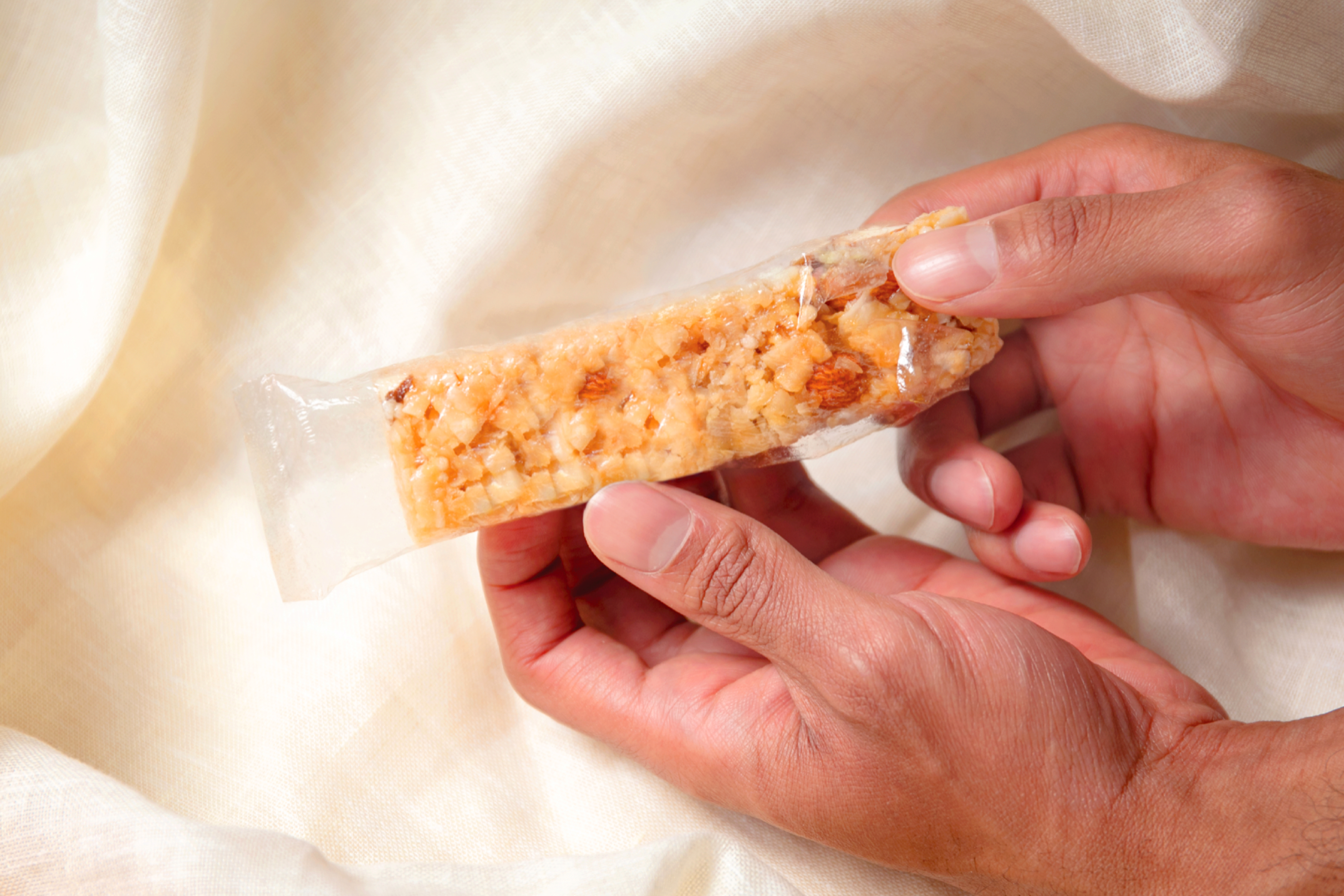
What industries or people were you influenced by outside of design?
There’s been a lot of communication with folks who are not related to design at all.
I’ve spent a lot of time talking with ocean farmers and seaweed scientists, who are delightful people by the way. I quickly learned that there’s nuance to cultivating seaweed—it’s not so straightforward that you just plant the seaweed and it grows and it’s happy. It is complicated. That goes for every piece of this complex puzzle.
It’s important to have a depth of understanding there, to talk with people in big plastic, to understand the giant machines that make the packaging possible and the converters who work with brands. It’s not as simple as finding a brand that we want to work with and marketing seaweed to them.
There are also all these people in the middle—stakeholders, governmental organizations, folks involved with composting infrastructure—who are really important, because often people don’t have access to industrial composting. That’s why our product is home compostable.
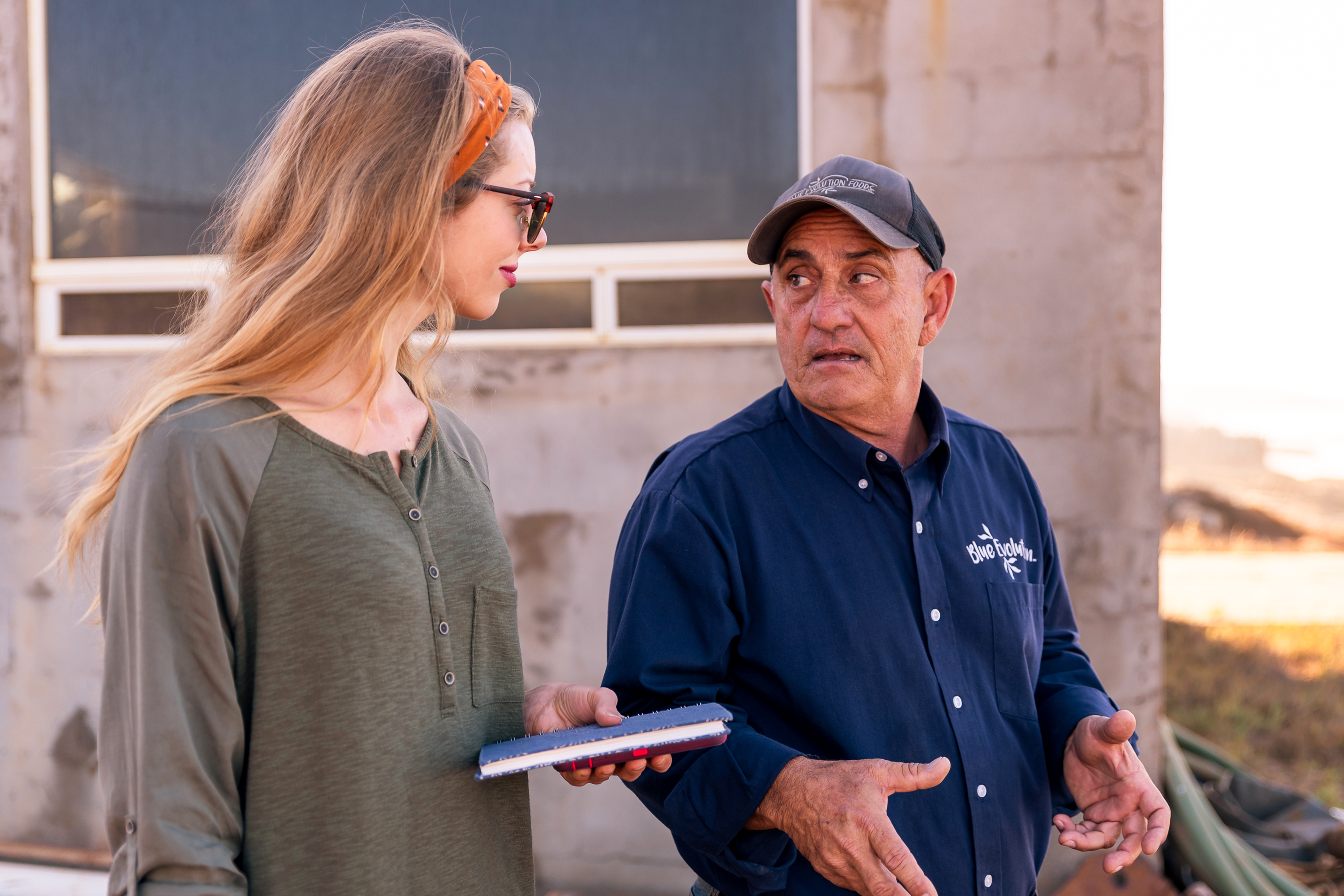
What is stopping companies from buying from seaweed suppliers and using it for packaging? What’s the delay?
Unfortunately, I don’t think there’s a clear answer for that. It’s not my impression that brands are necessarily working with a ton of biomaterial companies on finding better solutions, but there are a number of companies that are. So maybe it’s not cost, especially in an environment where you have high-profit margins and you can afford to spend a little bit more on packaging when it’s part of the brand experience.
Another theory is that the seaweed space is brand new. There are really only four or five companies in the world that are looking at seaweed as a packaging material.
Innovative, new materials bypass slow policy changes. The roadblock to mass adoption is just a matter of time. The big plastic industry is struggling to keep up with the times. Major brands have made very public commitments to switch to reusable, recyclable, and compostable packaging by 2025, but very few viable alternatives exist.
Designers are agents of change. We’re the ones who are often pitching the kinds of materials that are being integrated at scale. I think it’s really important that designers take hold of their power and really clearly communicate to those who have the purchasing power that swapping out materials has an enormous impact. It’s not just environmental—it’s everything.
What are some questions that you asked yourself when starting an endeavor like this or questions you ask yourself throughout the process?
How can I, as a designer, go beyond the call for “sustainability”?
How can we make academic, scientific, and otherwise inaccessible information accessible to more people?
How can we empower more people to partake in conscious consumerism?
Personally, why is this meaningful to you and your craft in design? Why work on this rather than anything else?
I want to make work of consequence. In order to realize the thriving future we believe in, we all have to become innovators. Sway bonds science, design, and technology to reimagine plastic, one of the basic building blocks of modern society. In the near future, I hope we’ll evolve to operate not just as a materials lab, but also as a design studio specializing in regenerative systems!
“How can I, as a designer, go beyond the call for ‘sustainability’?”
Do you feel like the world is improving its understanding of sustainability? What deserves more attention?
Regeneration and carbon negative technology deserve more attention.
Also, I feel that the “world” often overlooks the fact that the harms of plastic waste are felt most strongly among disenfranchised populations. Plastic is destructive at every stage of the supply chain, and too often, climate solutions are built with only the most privileged of us in mind.
Can you share a humbling lesson learned throughout this process?
I never envisioned myself, as a designer, leading a company as a CEO. My training is much more geared toward creative direction. Leadership is truly humbling. I’m constantly switching gears between my supply chain, engineering, sustainability, and financial teams, all of whom are much more qualified for the logistical complexities of their fields than I am!
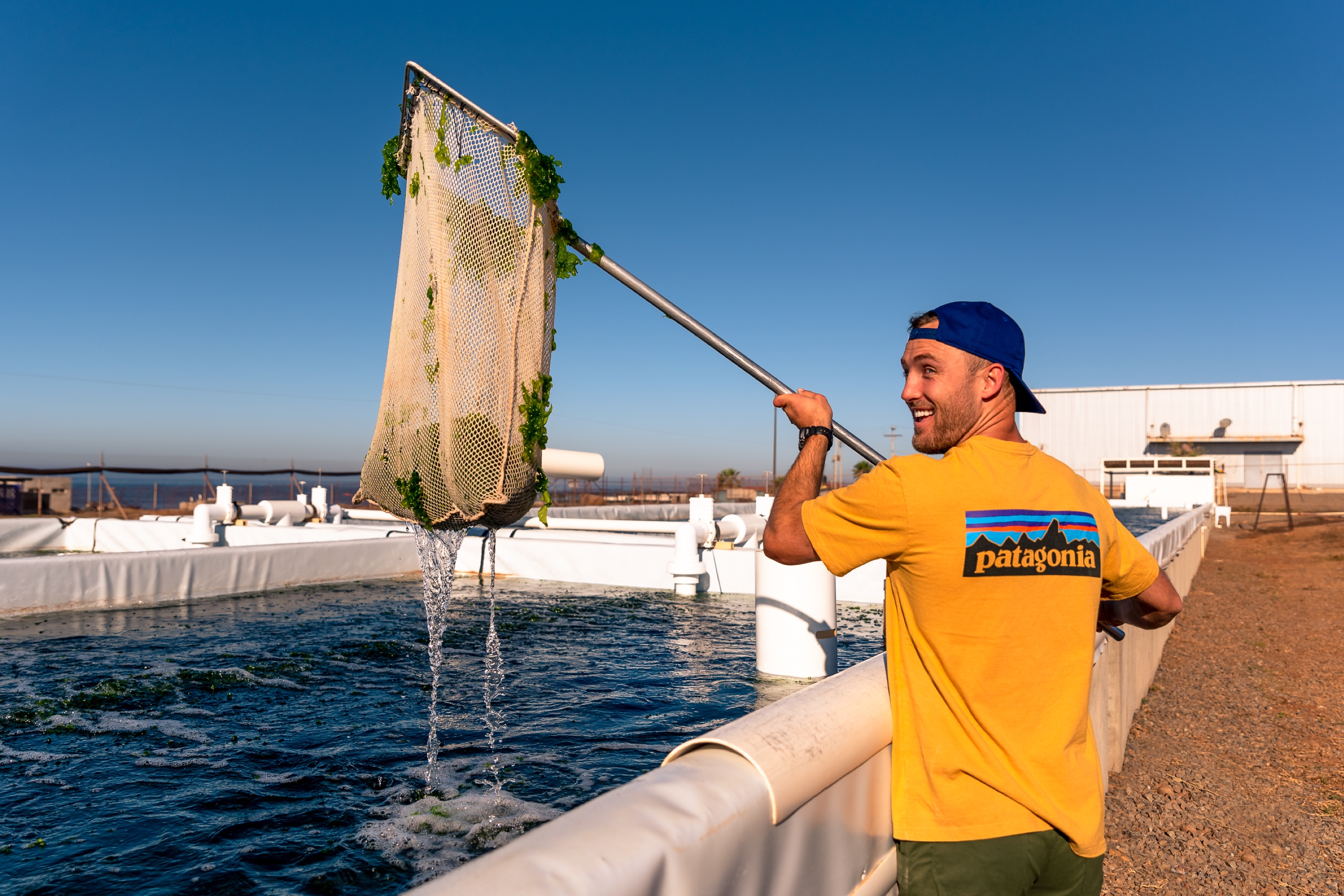
What’s something you believe about a plastic-free world (or the word sustainability) that most people would disagree with?
We must invest in climate optimism. Climate optimism asks that we celebrate the momentous progress that has been made toward preserving and regenerating the planet, while also transforming that hope into action. It is easy to feel overwhelmed by the magnitude of the climate crisis. We acknowledge the realities of climate change, but we also know humanity is rallying to save what we can.
I think designers are especially equipped to encourage climate optimism, and that’s not the same as climate naiveté. It’s how we can emphasize all the progress that has been made and acknowledge all of our achievements in climate action, while also acknowledging what’s coming next, because hope is what motivates people more than anything. It’s not anger or fear or frustration. I think that only adds to the feeling we all have right now, which is that we’re very overwhelmed. I’m very overwhelmed. I need to feel hope and optimism to keep working toward a solution. I have to believe that there’s a possibility of saving what we have left.
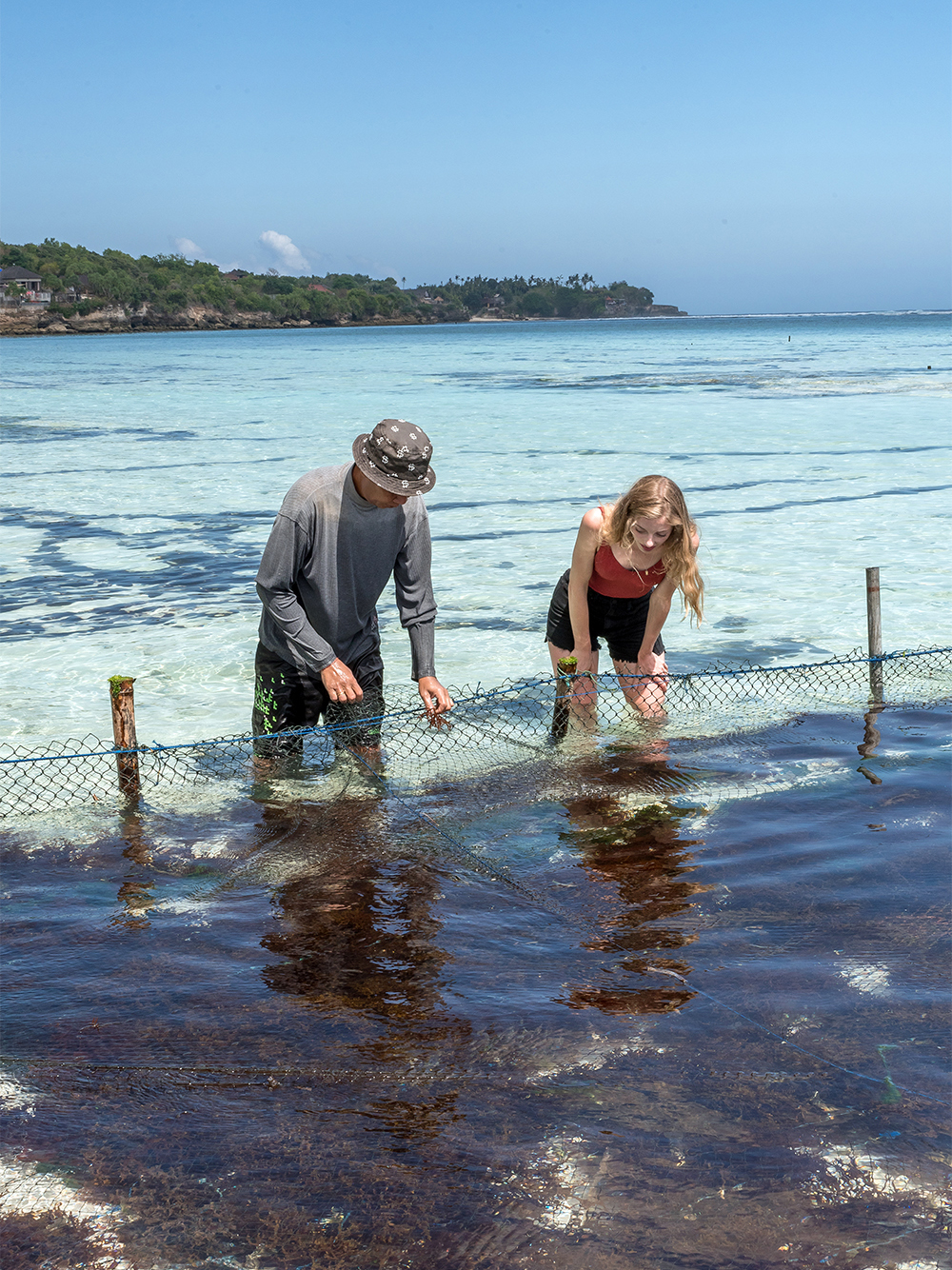
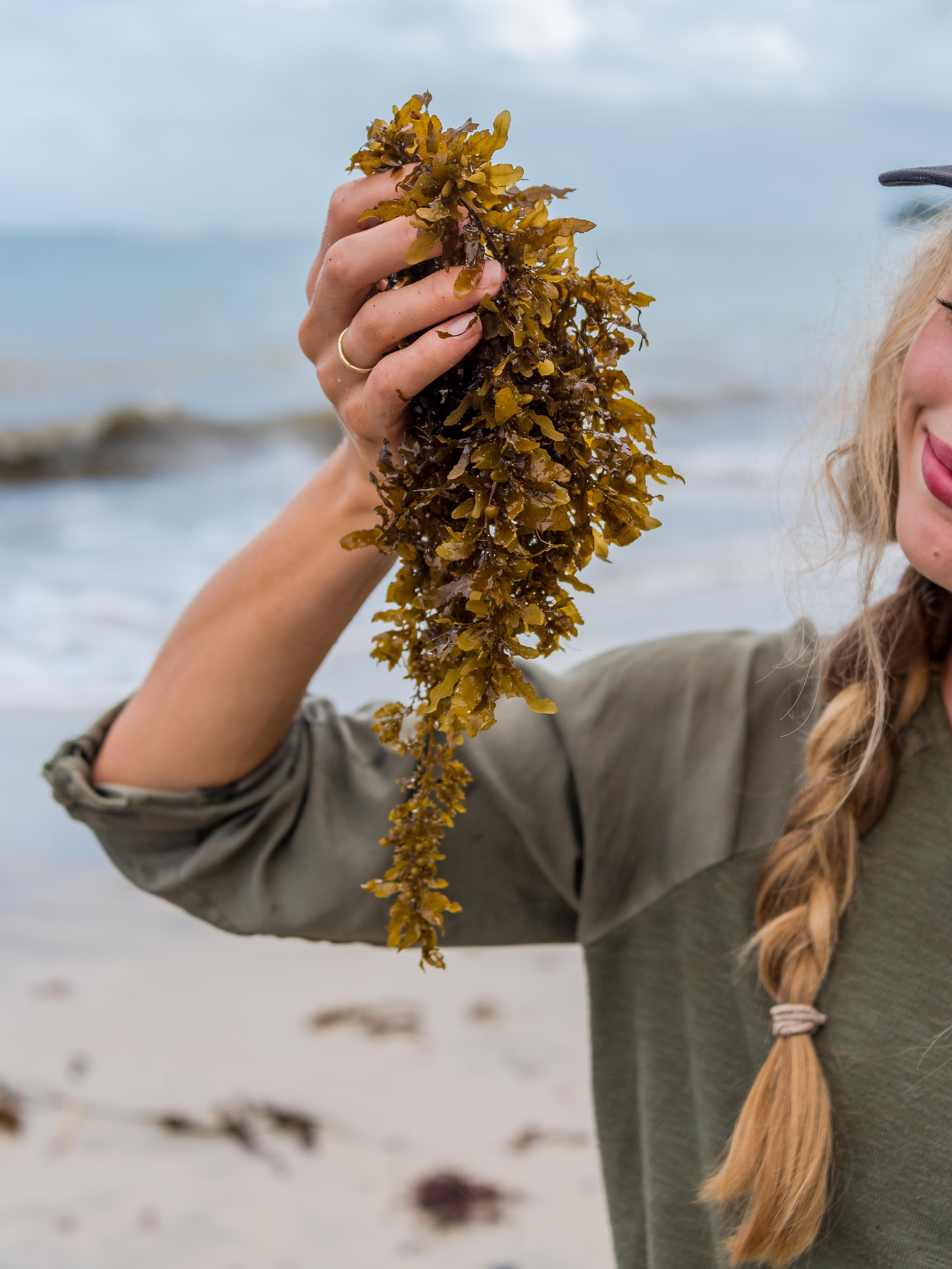
Something that I turn to as a climate optimist is that renewable energy is more affordable in the United States than coal is now. Major agreements have been made in countries from Sweden to the United States around banning gas-guzzling cars, or banning coal or plastics. Lots of progress is being made that we can feel optimistic and hopeful about, and we should be funneling our energy into those avenues, rather than just saying that it’s too late.
What are you working on right now?
We’re securing really cool partnerships with seaweed suppliers, as well as brands who want to use our product. That has been very exciting. We’ve just launched a new website, swaythefuture.com. And we’re building out a product development roadmap so that we can have trials of our seaweed-based polybags running by this time next year. Fingers crossed!
Thank you, Julia, for your story, your insights, and the work that you and the team are doing.
Paul Jun is the Editorial Director of COLLINS.
Julia Marsh is the CEO and co-founder of Sway.